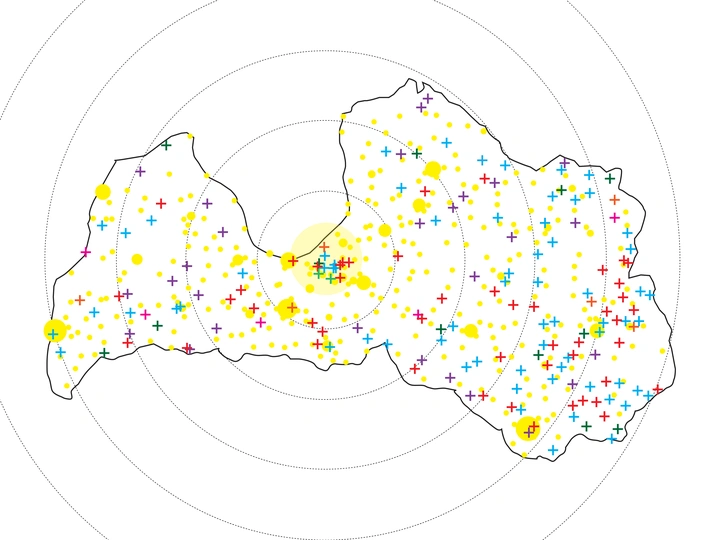Reorganize

Carla Wirsching
Summer works is a young research collective of two architects based in Munich and Riga. They gravitate towards incorporating research and architectural critique into their design processes, an often useful tool for finding a common language despite working in different contexts.
Carla Wirsching has a strong background in publishing – most notably her contributions to archithese, a Swiss-based architecture and theory magazine and her deep engagement with the built environment in Eastern and Central Europe, which she worked on at the chair of Recent Building Heritage (Prof. Dr. Andreas Putz) at TU Munich. The research residency at Kim? opened up for her a space to critically reflect on architecture-related publishing in Latvia and to develop a base for further publications.
Māra Starka is a Riga based architect and curator. She completed her architectural studies at TU Munich and later worked as part of the curatorial team at the Architekturmuseum der TUM. She is an active practicing architect in Rīga and has been recognized with the National Architecture Award as part of the teams behind projects such as the Dailes Theatre Square and the Timber Office building in Lizums. She has also contributed to numerous educational building designs. Through the LINA fellowship, she wishes to continue the practice of Summer Works collective, using field research and conversations in various school buildings as a testing ground to explore existing practices of abandonment, care, and invention.
Over the past couple of decades, in Latvia and other countries with shrinking populations, the reorganization, renovation, or abandonment of educational spaces – wrapped in various visual and sonic forms of communication – has become a recurring theme in public discourse. It has also become part of a broader, largely intuitive practice of caring for the built environment.
What does it mean to “spend money on people instead of concrete”? This question is, at its core, an architectural one. Using mapping, interviews and archival research, we focus on the space and stories that the bureaucratic process leaves behind. The reorganization of school networks is a decision shaped by extreme thrift and algorithmic projections. On a map too, this becomes drastically apparent, undoubtedly optimized.
While questioning how to approach the need to preserve or renovate school buildings whose primary function is to educate future generations, we have been studying post-war school buildings in post-socialist European countries. We want to understand how these buildings – so often carrying an outdated mindset – can be integrated into the contemporary built environment and carry new ideas.
Previously, during a residency at Kim? Contemporary Art Center in Rīga (itself located in a formerly abandoned school building), we developed this research by mapping changes in the Latvian school network, gathering archival material, and carrying out extensive photofixations. All the visual material helped us spark conversations, sharing memories and reflections on how we would want to be educated. In the next stages, we aim to critically assess both standardized and special modernist school projects and their adaptability, as well as to find partners in other contexts who share similar spatial experiences.